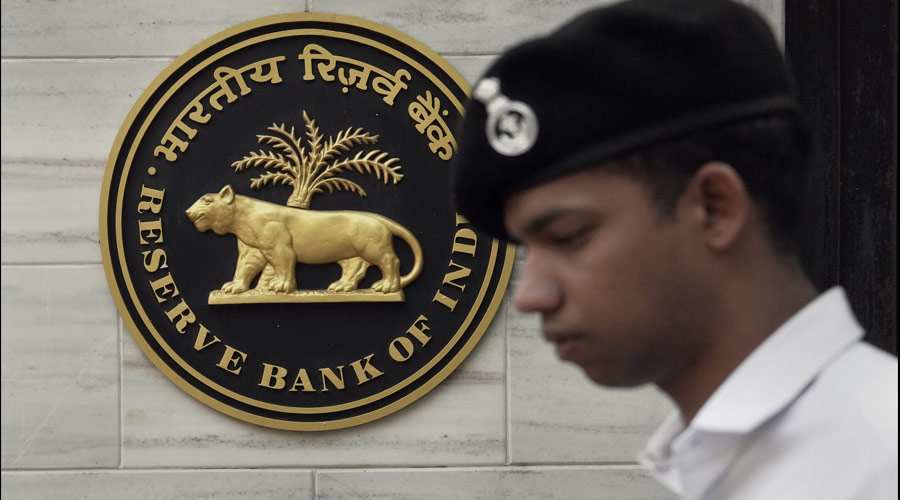Viral Acharya, the former Reserve Bank of India deputy-governor, has said India’s biggest conglomerates — Reliance Group, the Tatas, Aditya Birla Group, Adani Group and Bharti Telecom, loosely labelled as the Big 5 — need to be broken up as they are contributing to elevated inflation in the country.
“Sky high tariffs” have shielded these conglomerates against competition from foreign companies, he said. Acharya made these observations in a paper presented at a Brookings Institute conference.
Acharya, who has slammed the Modi government in the past, especially in his outburst against the move to trammel RBI’s independence when he was on Mint Street, attacks Modi’s industrial policy that relies more on industrialist cronies — rather than states — to deliver outcomes.
``Arguably, this growth has also been supported by a conscious industrial policy of creating `national champions’ via preferential allocation of projects and in some cases, regulatory agencies turning a blind eye to predatory pricing.”
“Such growth of conglomerates raises several concerns, such as the risk of crony capitalism, i.e., political connections and inefficient project allocations, related party transactions within their Byzantine corporate organisation charts, over-leveraging due to an implicit too-big-to-fail perception, key-men/women (or key-family) risk in their operational efficiency, and a lack ofcreative destruction by crowding out of entrants,’’ he said.
In the paper, Acharya who was the RBI deputy governor from January 23, 2017, to July 23, 2019, pointed out that India was effectively a closed economy until 1991 and industrial concentration was high because of state-owned monopolies.
The concentration within the top 5 private firms gradually rose and by 2010, the concentration in these companies had caught up with the overall top 5, comprising state-run-PSUs.
The concentration of both the private players and the PSUs both fell during 2010-2015.
The concentration started rising again from 2015 onwards, overall as well as just within the private top 5 firms.
``Put another way, private Top-5 groups evolved into the overall Top-5 across many non-financial sectors. At a disaggregated sectoral level too, the notable shift occurs around 2015-16 in several sectors,’’ Acharya said.
Mapping out the growth of the so-called Big-5, Acharya said that first, until 2010, they increased their footprint in more and more industrial sectors and after this breadth-first strategy came to the depth-next strategy wherein beginning 2015, they started acquiring larger and larger shares within the sectors where they were present.
``In other words, Big 5 grew not just at the expense of the smallest firms, but also of the next largest firms. Some of this growth in the share of the Big 5 may be due to their ability to acquire relatively large defaulted companies.’’
Claiming that the Big 5 have been able to exert extraordinary pricing power and capture economic rents relative to other firms in the industry, Acharya pointed out that demand for goods in India has remained weak after the pandemic, even as services demand has grown.
However, goods prices in India have remained elevated, even after global goods inflation softened in 2022 as supply-chain issues eased.
Moreover, the goods inflation momentum in India is positive whereas its global counterpart is negative. Analysts, he added, argue that goods inflation in India is likely to persist as margins of manufacturers in the country are substantially high due to their protection via tariffs and their market power from rising concentration.
National champions
“Creating national champions, considered by many as the industrial policy of New India, appears to be feeding directly into keeping prices at a high level,” Acharya said.
He said these conglomerates should be dismantled to increase competition and reduce pricing power.
One way out of their breadth of presence is the good old Theodore-Roosevelt or William-Howard-Taft style “trust buster” strategy of simply breaking up large industrial firms and their monopolies or oligopolies by regulatory fiat or via competition commission diktat.
This has been done repeatedly in the US when the concentration of corporate power has risen nationally. One advantage of this approach is that it would require various resulting sub-groups to have separate – and likely more transparent – balance sheets as well as ownership, management and governance structures.
Such “trust-busting” may be awkward for the current government given it has – by revealed preference – adopted an industrial policy favouring “national champions”.
“The rising concentration of corporate power risks making inflation even more persistent and creating a vulnerability on the external sector front given India’s outsized fiscal and cyclically sensitive current account deficits’’, he noted.










